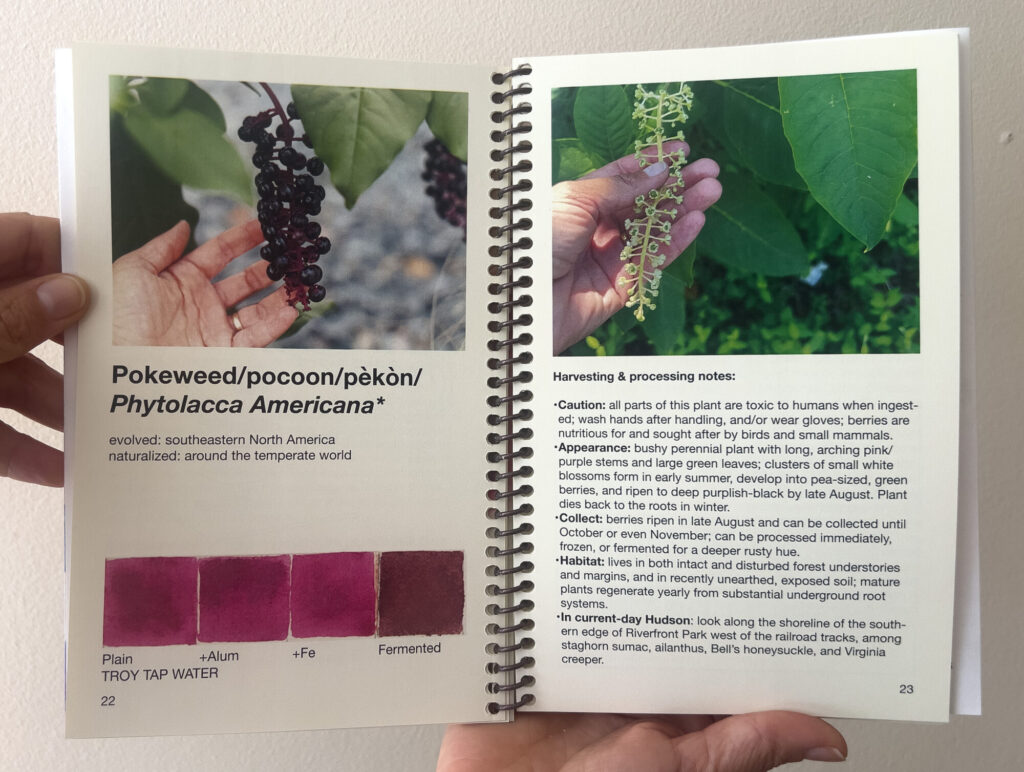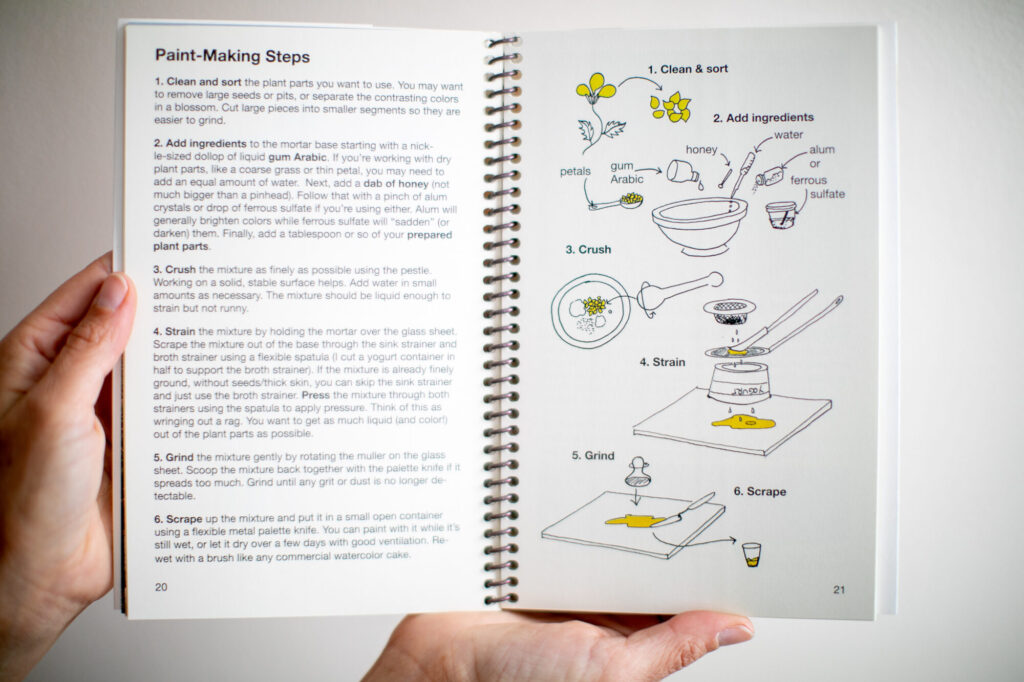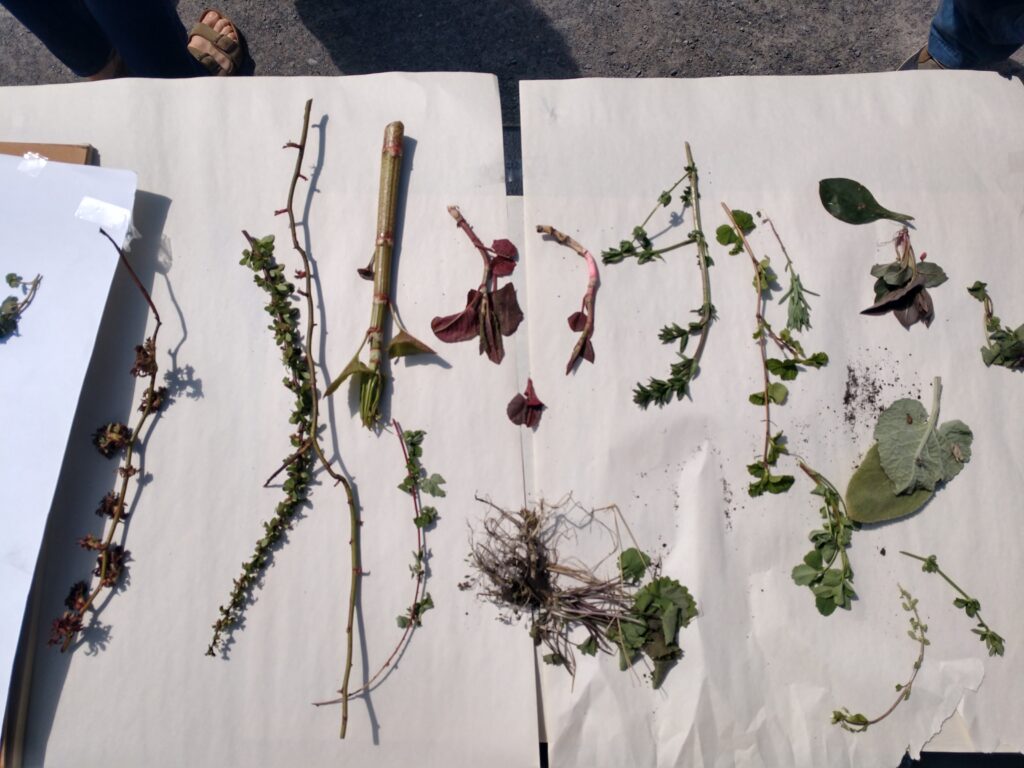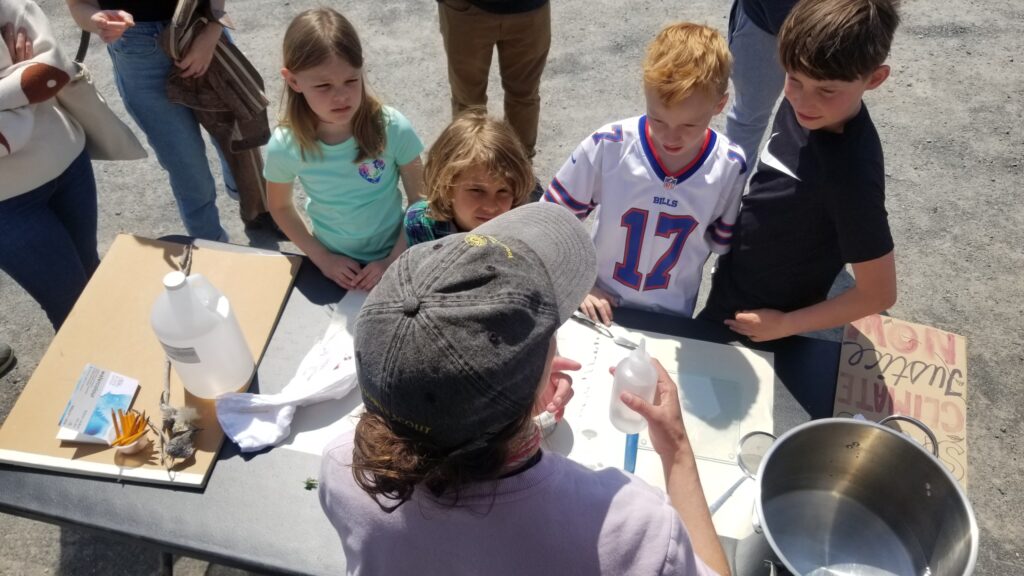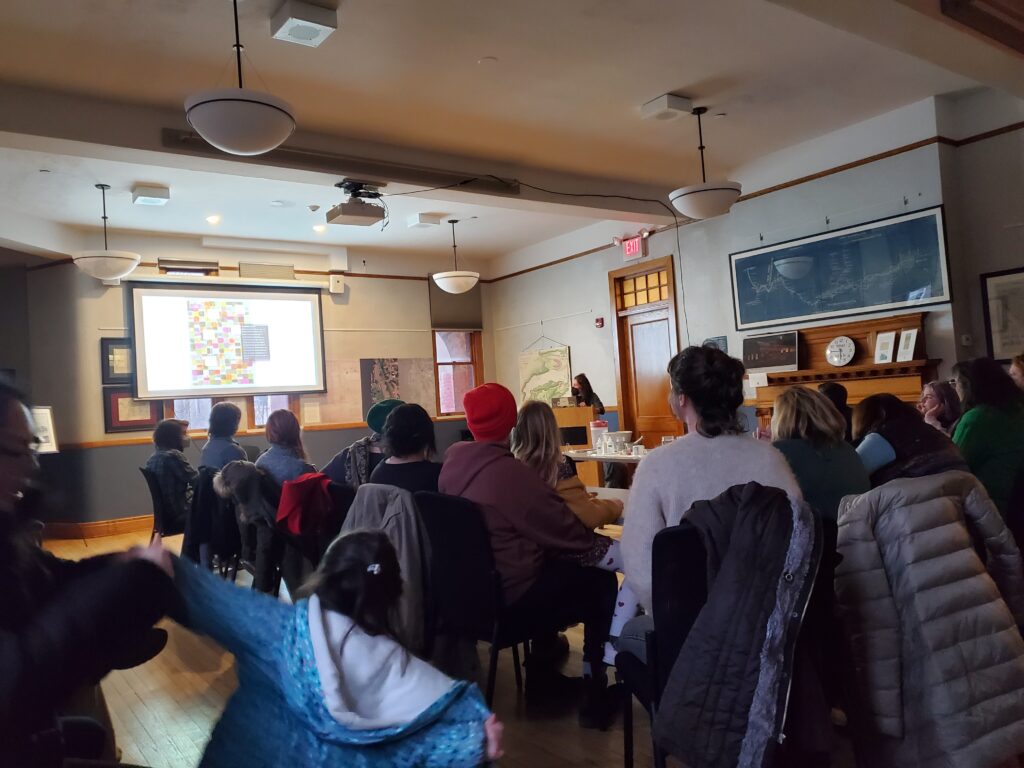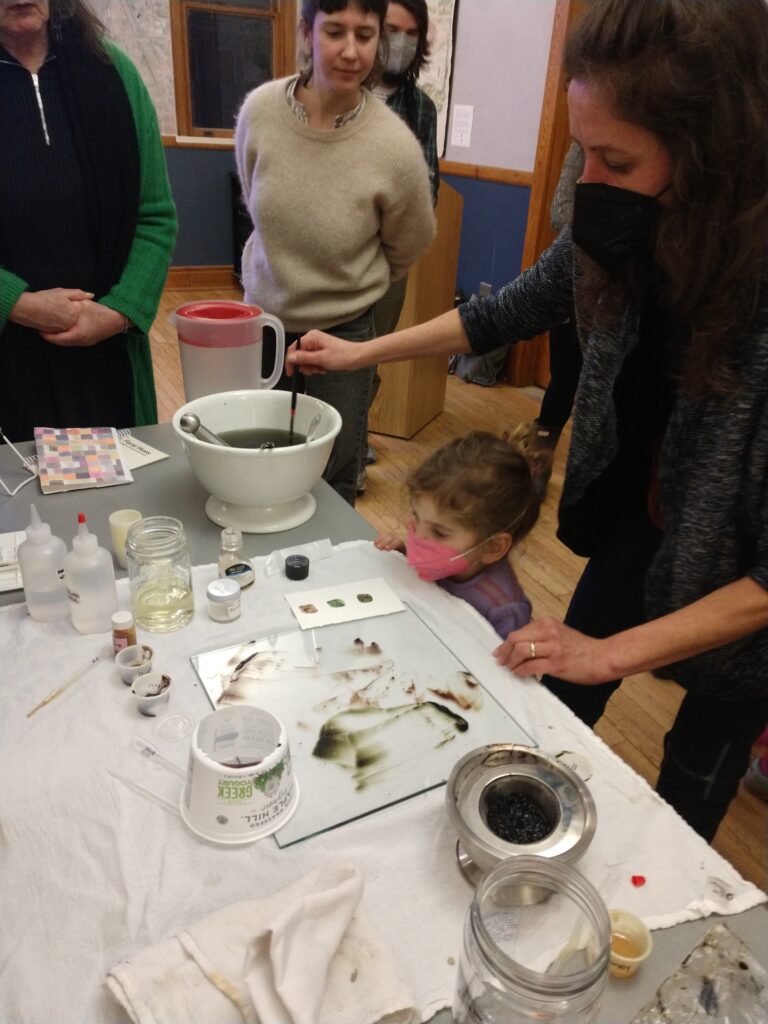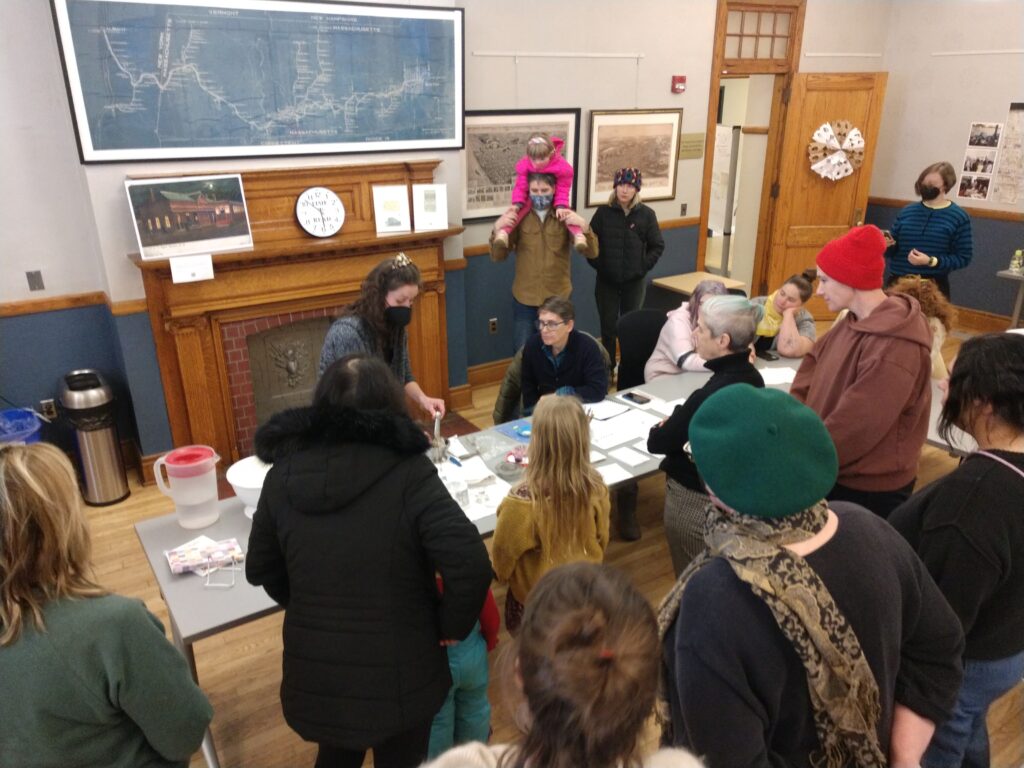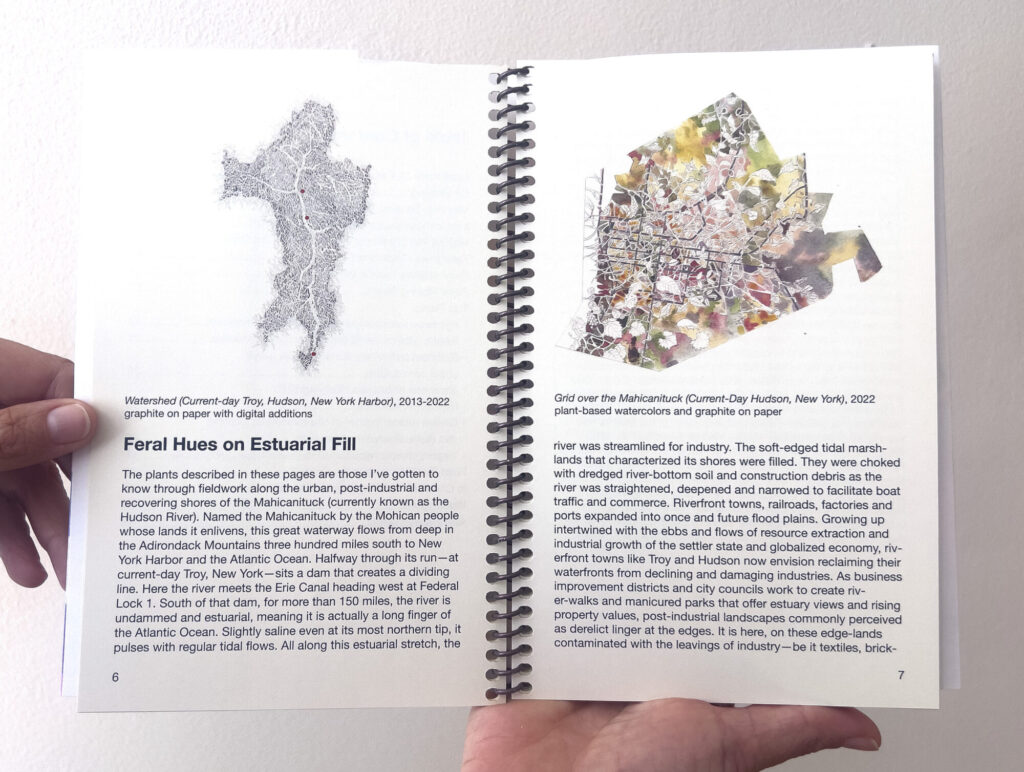
FERAL HUES: A GUIDE TO PAINTING WITH WEEDS
Book and workshop by Ellie Irons on making pigments from plants, with original paintings, essays on plant ecology, field guide on plants from Hudson area, and step-by-step instruction on pigment making.
What is it?
A book and set of workshops by artist and educator Ellie Irons about making pigments from plants found in the post-industrial riverfront town of current-day Hudson, New York. The book contains a step-by-step-guide to making watercolor paints from foraged plants, a color chart of the various “feral hues” the process produces, as well as original paintings, drawings by Irons and a prompt for “vegetal attunement.” The book also contains in depth profiles of seven plants encountered in Hudson near the waterfront.
Workshops included introductions to the plants found near the Hudson waterfront and hands-on instruction in making pigments.
The book, as well as a set of pigments, is available for check out in Toolshed’s Ecotopian Collection at the Hudson Area Library and is also available for purchase (going into its 3rd printing). Toolshed organized the workshops by Irons as well as contributed to the book publication.
What does it do?
Puts readers, users and workshop goers in touch with the overlooked plant ecology in towns like Hudson. Challenges notions of what are “weeds” and what are desirable plants. Demonstrates how post-industrial landscapes are evolving. Instructs on how to make pigments from plant life. Draws people closer to plants.
Who is it for?
All ages and experiences. While the specific plants described in the book are specific to certain ecosystems and climates, the techniques described can be applied to any plant that produces pigments. The Ecotopian Collection provides some of the key ingredients necessary for making the pigments.
What inspired and informed the project?
To name just three of the inspirations for Irons who has long been combining art and environmental science: 1) Potawatomi writer and plant biologist Robin Wall Kimmerer and her notion of the complementary values of Scientific Ecological Knowledge (SEK) and Traditional Ecological Knowledge (TEK); 2) rtist and anthropologist Natasha Myers and her notion of “seeding Planthroposcences;” Anna Tsing’s Feral Atlas project.
A full bibliography can be found at the back of Feral Hues: A Guide to Painting with Weeds.
Who worked on it?
In addition to Irons:
Book published by Publication Studio Hudson in collaboration with Toolshed.
Funding from Toolshed (via People and Planet Fund), Berkshire Taconic Community Foundation, Oak Spring Garden Foundation.
Residency at Basicilica Hudson as part of their Hudson as Muse residency program and supported by Toolshed.
The Hudson Area Library hosted a workshop and hosts the Ecotopian Collection which contains a set of Irons’ pigments, the book and materials to make fresh pigments.
What specific tools does it employ or create?
Ruderal/feral ecologies; hand-made pigments; foraging; indigenous knowledge; historical research; mapping/countermapping; field guides.
